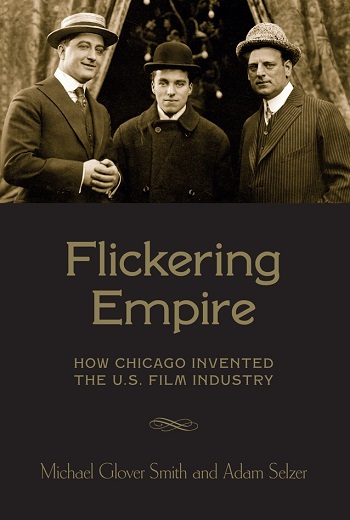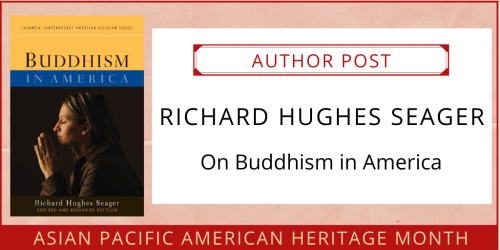Interview with Michael Glover Smith, Co-Author of "Flickering Empire (Part 2)
The following is the second part of our interview with Michael Glover Smith, co-author of Flickering Empire: How Chicago Invented the U.S. Film Industry. (You can read part 1 here.)
Question: Oscar Micheaux also was part of Chicago’s film history. In what ways was Chicago important for the development of African-American or “race” movies?
Michael Glover Smith: A lot of the early films dealing with race offer “comical” racial stereotypes that are offensive. Even the first Essanay film, An Awful Skate, features a white actor in blackface makeup. William Foster, an enterprising African-American theater manager, founded the first black-owned film production company in 1910. Foster has been quoted as saying, “Nothing has been done so much to awaken race consciousness of the colored man in the nation as the motion picture. It has made him hungry to see himself.” In addition to the earliest shorts by the Foster Photoplay Company, Chicago was home to many other early “race films,” including Peter P. Jones’s The Slacker in 1917 and Oscar Micheaux’s Within Our Gates in 1919. The latter, which we discuss at length in our book’s post-script, is the earliest surviving feature film directed by an African American. It’s not only a great film, it’s a rare and invaluable document of black American culture from that era.
Q: As you mention in the book, Chicago played a role in the censorship of films. What was the legacy of Major M.L.C. Funkhouser in determining what Americans saw at the movies?
MGS: Learning about the role of Chicago’s censorship board in doing research for the book was really eye-opening. The local censorship board, under the auspices of Funkhouser, was actually stricter than the national censorship board. There are a lot of fascinating and funny stories about the board and so that ended up becoming an entire chapter in our book. Funkhouser was reactionary in harshly censoring sex, violence and political content deemed inflammatory but he was also a politically corrupt hypocrite who would throw parties and screen the naughty bits that he had ordered cut from the films. He also allowed the Chicago Tribune to print descriptions of scenes that had been censored, which resulted in him getting favorable publicity from that particular paper. He was quite a character.
Q: So, what happened? What explains the decline of the Chicago film industry?
MGS: There were a complex combination of factors that resulted in the decline of Chicago’s film empire. But, basically, it can be reduced to: 1) the two major Chicago studios were part of the Motion Picture Patents Corporation (or MPPC), a trust that Edison had established in an attempt to monopolize the industry; this trust was sued and forced to disband by the U.S. Justice Department in 1913, 2) most of the independent (i.e., non-MPPC) filmmakers had fled to southern California in order to make movies as far away from Edison and his patent-enforcing “Goon Squad” as possible and 3) the weather and geography of southern California were ultimately deemed more conducive to year-round shooting than Chicago.
Q: What’s the status of Chicago’s film industry today?
MGS: The local industry has been on an upswing in the 21st century. There has probably been more activity here in the past few years than at any point since the era documented in our book. The state has offered an aggressive film tax credit that has brought Hollywood crews out here to make big-budget films like The Dark Knight and Divergent. But, more importantly, there is a thriving local independent film scene. A lot of these local filmmakers, like Joe and Kris Swanberg, Stephen Cone, Kevin B. Lee, Ignatiy Vishnevetsky and Melika Bass, are starting to receive international attention for their work.
Q: Do you have some favorite Chicago films from the period covered in your book?
MGS: I’m a big fan of His New Job and Within Our Gates, both of which I already mentioned. I also really like Theodore Wharton’s poignant “social-issue” drama From the Submerged and Charles Brabin’s Edgar Allan Poe biopic/proto-horror movie The Raven. These latter two films, both made for Essanay, were directed with a really innovative flair.





